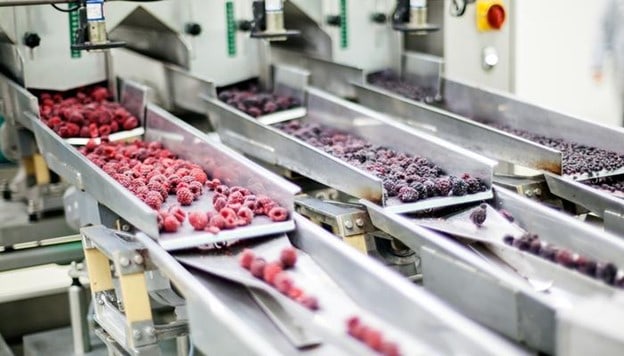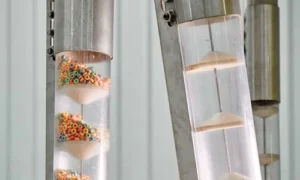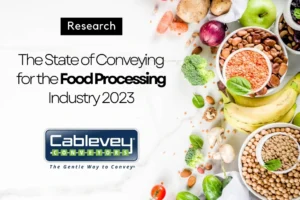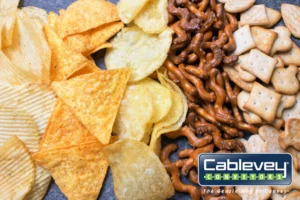The field of food production has seen remarkable advancements with the introduction of modern equipment used in food processing. These technological innovations not only streamline operations but also ensure higher standards of safety and quality. This article delves into the various types of modern machinery and tools that have revolutionized the food processing industry, highlighting their impact and the benefits they bring to both producers and consumers.
What’s the Role of Modern Equipment Used in Food Processing?
Modern food processing equipment stands for a wide range of machines, systems, and components used to handle, cook, prepare, store, and package processed foods. Even if this equipment is mainly used to increase the palatability and digestibility of foods, as well as extend their shelf life, some types of processing equipment are also used to perform other auxiliary functions. Among these, we can include the preparation, packaging, and handling of processed foods from one side of the processing facility to another.
Food Processing Industry Is Booming Thanks to Technological Advancements
In 2019, the global food processing and handling equipment market was valued at around $137.2 billion. With a projected CAGR of 6.2%, the market is expected to reach $196.6 billion by 2025. The numerous processing technology advancements made in the food industry, as well as the continuous growth in demand, are expected to drive the industry’s growth even further over the coming years. The expansion of food manufacturing in emerging economies will also support the growth of the equipment market.
There Is Different Equipment for Different Stages of Processing
When it comes to the production cycle, the equipment used can be broken down into several groups based on stages of processing. These are characterized by specific functions during which individual unit operations will be performed. For instance, during the preparation stage, the main function is to prepare the foods for further processing. Operations performed during this stage include washing and separating.
There are also secondary functions during the preparation process that support the food production cycle’s primary function. These can include system control operations that maintain the required processing standards or material handling systems that convey materials between the various process stations.
With that said, some of the most common functions by which the equipment can be grouped include preparation, mechanical processing, heat processing, preservation, packaging, and material handling. We’ll talk about all of these stages in detail in the text below.
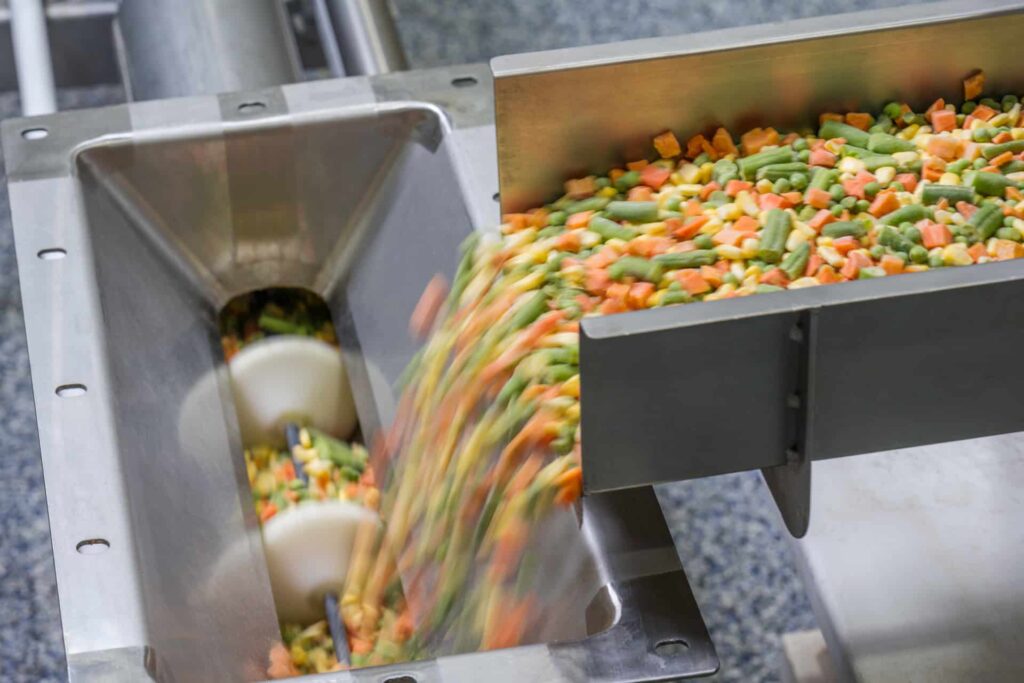
Preparation Stage and the Equipment for Initial Operations
The initial preparatory operations within the processing production cycle focus on preparing raw materials for future processes. In general, the food processing techniques used during this stage include the separation of desirable material from low-quality or undesirable material.
By doing this, manufacturers can produce uniform and high-quality foods and remove any foreign matter, contaminants, or microorganisms that may degrade or damage the food or equipment or result in food-borne illnesses. We can include cleaning, sorting, grading, and peeling in the list of processing techniques used during the raw material preparation stage.
- Cleaning process – This process removes foreign matter and contaminants from the raw material’s surface via either wet and/or dry cleaning. The wet cleaning process includes processing technologies such as floatation tanks, spray washers, sterilizers, and ultrasonic cleaners. The dry process includes air classifiers, magnetic, and screen separators.
- Sorting and grading – It assesses several characteristics of the food items, such as damage, color, aroma, and flavor. This process determines the overall quality of the material. Processing technology used includes tungsten lights (candling) and various other image processors.
- Peeling process – This process removes any inedible or undesirable material, increasing the quality and appearance of the final product. Pressure vessels for flash steam peeling, stationary or rotating blades for knife peeling, abrasive rollers for abrasion peeling, or furnaces and conveyors for flame peeling are some of the processing technologies used.
Mechanical Processing Equipment – Changing the Physical Form of the Material
Mechanical food processing techniques reduce, enlarge, homogenize, or generally change the food matter’s physical form. This process increases the effectiveness of future processes, improves the quality and edibility, and allows for a greater range of products to be made. Here’s what falls under mechanical processing:
- Size reduction – This reduces the average particle size of solid matter through shearing, compression, or impact force processes. Grinding, pressure, or attrition mills, roll crushers, band saws, or meat grinders are some of the processing technologies used.
- Size enlargement – This will increase the average size of the items through processes like extrusion or agglomeration. Single or twin-screw extruders, refrigerated extruders, agglomeration rotating pans, high-speed agitators, and various molders are used.
- Homogenization process – Also known as emulsification, this process reduces the average particle size but increases the consistency of the item. Emulsifiers, homogenizers, high-shear mixers, or colloid mills are used as processing technologies.
Heat Processing Equipment Causes Various Changes
Heat transfer equipment can be used to direct heat towards or away from the material. Heat processing equipment, in particular, can cause physical, chemical, biological, and biochemical changes to the resulting product. These processes will affect the overall nutritional qualities by altering the chemical structure and enhancing the flavor, or they can serve as food-preserving means by inhibiting or destroying pathogenic microorganisms or enzymes that can cause spoilage.
- Baking/roasting – This process produces physical and chemical changes and helps preserve food. It’s suitable for bread, crackers, biscuits, and other flour-based and dough-based products. Baking ovens, breach ovens, and continuous or semi-continuous ovens are used.
- Blanching process – Steam or heated water is used to reduce the number of pathogenic microorganisms and inactivate undesirable enzymes that can result in spoilage. Blanching also cleans, softens, and improves the overall quality. Suitable for fruits and vegetables, blanching uses either steam or hot water blanchers.
- Dehydration process – Heat is used to evaporate water to increase the shelf life of food products. It also reduces the weight and volume of the final food product. Convective, conductive, vacuum, or freeze dryers are used for dehydration.
- Pasteurization process – Processing food material under medium-heat temperatures (158-212°F) will inactivate most enzymes and microorganisms, which can cause spoilage. Pasteurization leads to products with a limited shelf life but without affecting the quality or other characteristics. Dairy, wine, beer, and egg products, as well as fruit and vegetable products, are pasteurized with in-container or continuous-flow pasteurizers. Plate heat exchangers or concentric tube heat exchangers are also used.
Preservation Equipment and Methods
While some of the aforementioned heat food processing techniques offer varying degrees of preservation, there are other food processing technologies that do the same. There are several preservation methods available, each with its own way of destroying microorganisms and enzymes. Let’s take a look at them:
- Chemical preservation – It uses both natural and non-natural chemicals that help prevent or inhibit food spoilage. These procedures can change the pH and other nutritional qualities of the food. Salting, smoking, and using various acids like acetic acid, vinegar, sorbic acid, or benzoic acid, among others, are all chemical food-preserving techniques.
- Irradiation method – It uses ionizing radiation to inactivate enzymes and destroy microorganisms. Isotopes and electron accelerators are typically used to achieve the desired effect.
- Refrigeration process – It reduces the temperature to depress the microbial and biochemical microorganism and enzyme process. It helps maintain the characteristics of food items. The processing technology used for refrigeration includes chillers, cryogenic systems, and mechanical refrigerators.
Packaging Equipment Has an Important Role in the Food Industry
Following the preparation, processing, and preservation stages, food typically undergoes one or more post-processing operations, such as packaging. As one of the final processing production cycles, packaging operations serve several functions. Here, we can include the containment of food, as well as its long-term protection and preservation.
In addition, packaging also provides enhanced convenience to the consumer, as it allows the food to be portioned by weight or volume so it can be more easily used, stored, transported, or distributed.
Lastly, packaging also helps identify the contents by communicating the ingredients, nutritional value, cooking instructions, handling, storage, and more. Packaging also allows for branding and marketing material. Packaging is available in several forms, such as bottles, cans, sealed bags, jars, boxes, and more. Depending on the type of packaging, material, and other operations, the equipment used can vary significantly.

Material Handling and Conveying Equipment
As far as material handling is concerned, the food processing industry has traditionally used a wide variety of different systems. Simply put, material handling equipment is used to transport material through the processing facility between the preparation, processing, preservation, and packaging stations.
Flat conveyor belts, bucket elevators, pneumatic, augers, and aero-mechanical conveyors have been typically used in the past. However, these conveyor solutions have had a tough time keeping up with the trends taking place in the industry, such as integration, automation, cross-contamination, and cost-efficiency.
Tubular conveyor systems, on the other hand, have managed to provide processed food manufacturers with the necessary flexibility and integration capability for many specialty food material types and processes. Tubular drag cable and disc conveyor technologies are excellent for all sorts of processed food industries – be it breakfast cereals, frozen fruits and vegetables, party mixes, snack foods, or other items where there’s a need for attention to added-value, fragile, and specialty materials and products.
Cablevey Conveyors Is the Leader in Conveyor Engineering Solutions
Cablevey’s cereal conveyor systems can move up to 2,000 cubic feet of product per hour (42.4 m3/h) in an enclosed tube without the use of air. Our conveyor solutions are available in a multitude of layouts and enhance food safety by eliminating the risk of product separation, degradation, or cross-contamination.
For these reasons, as well as the enhanced design flexibility of tubular cable and disc conveyors, these systems also require far less maintenance than their counterparts. Investing in industrial conveyor systems by Cablevey Conveyors is undoubtedly the smart move that will increase your facility’s productivity and ultimately lead to better profit.
Contact Cablevey Conveyors and Let Us Help You Improve Your Production Process
Enhance your production process by choosing Cablevey Conveyors, a leading provider of advanced conveyor solutions. With our expertise in handling a wide range of materials, we offer customized, efficient, and hygienic conveyor systems tailored to meet your specific needs.
Contact us to explore how our innovative conveyor technologies can optimize your operations, reduce downtime, and increase productivity. Trust Cablevey Conveyors to deliver reliable, low-maintenance, and cost-effective solutions that will transform your production process.
FAQ
How Does Cablevey Conveyors Ensure Hygiene in Their Systems?
Cablevey Conveyors prioritizes hygiene in their conveyor designs, which is especially crucial for industries like food processing and pharmaceuticals. Our systems are engineered to prevent cross-contamination and are easy to clean, ensuring a hygienic transport process.
Can Cablevey Conveyors Integrate With Existing Production Lines?
Cablevey Conveyors are designed to seamlessly integrate with existing production lines. Our team works closely with clients to ensure our industrial conveyor systems fit perfectly within their current setup, enhancing efficiency without major disruptions.
Are Cablevey Conveyors Suitable for Small-Scale Industries?
Yes, Cablevey Conveyors are versatile and adaptable, making them ideal for both large-scale and small-scale industries. Our conveyor solutions can be scaled and customized to fit the specific needs and constraints of smaller operations, ensuring they receive the same benefits of efficiency and quality.

